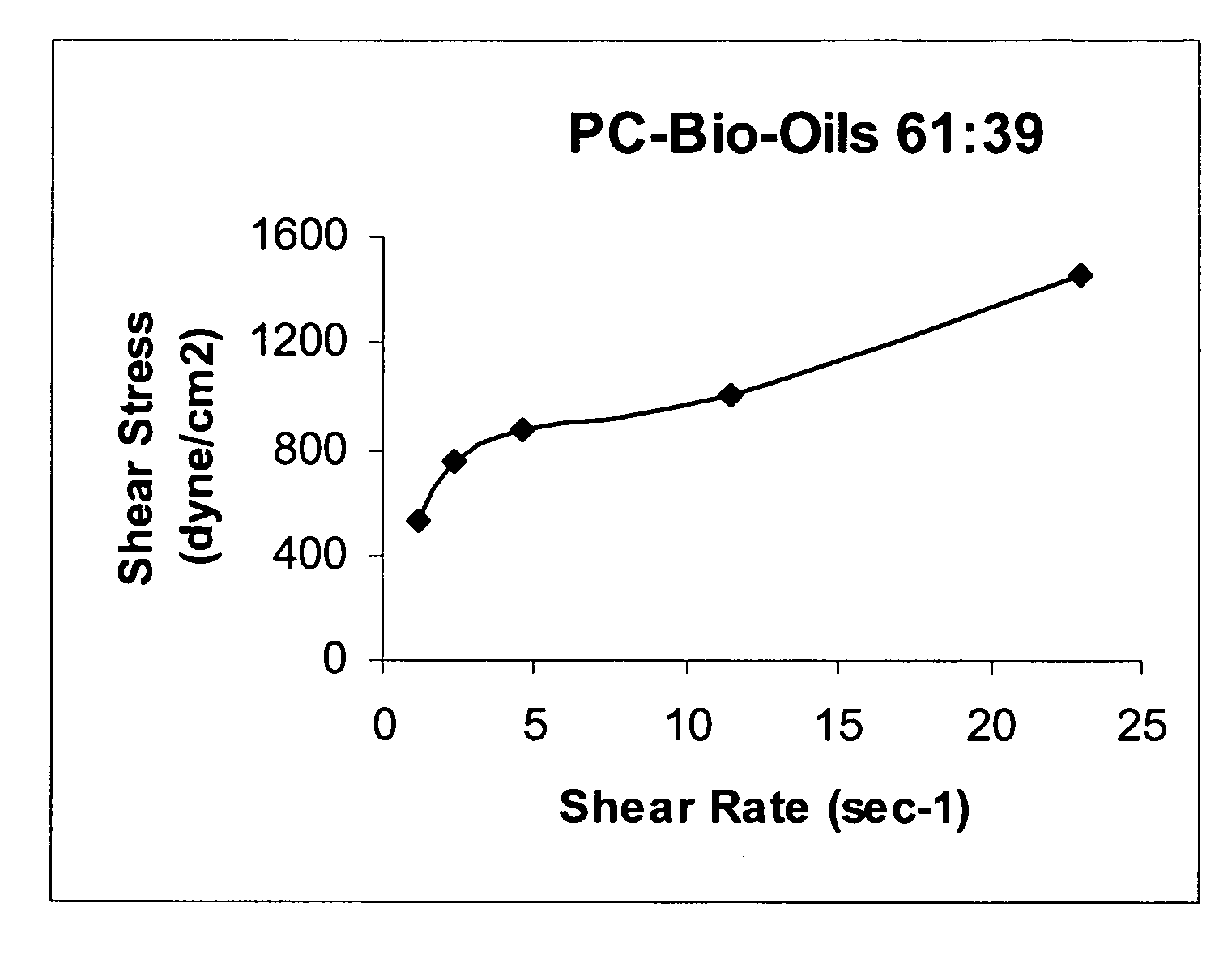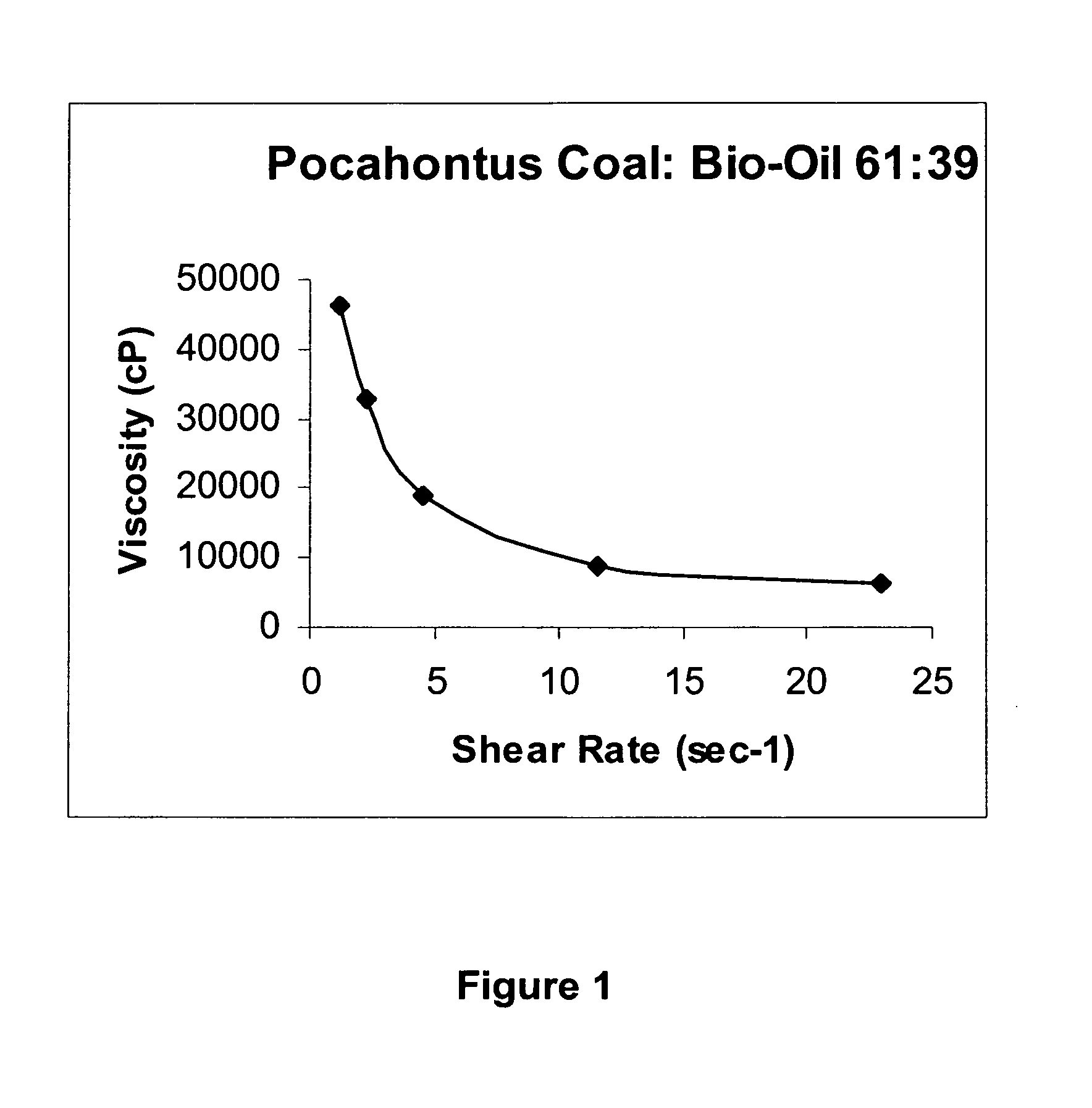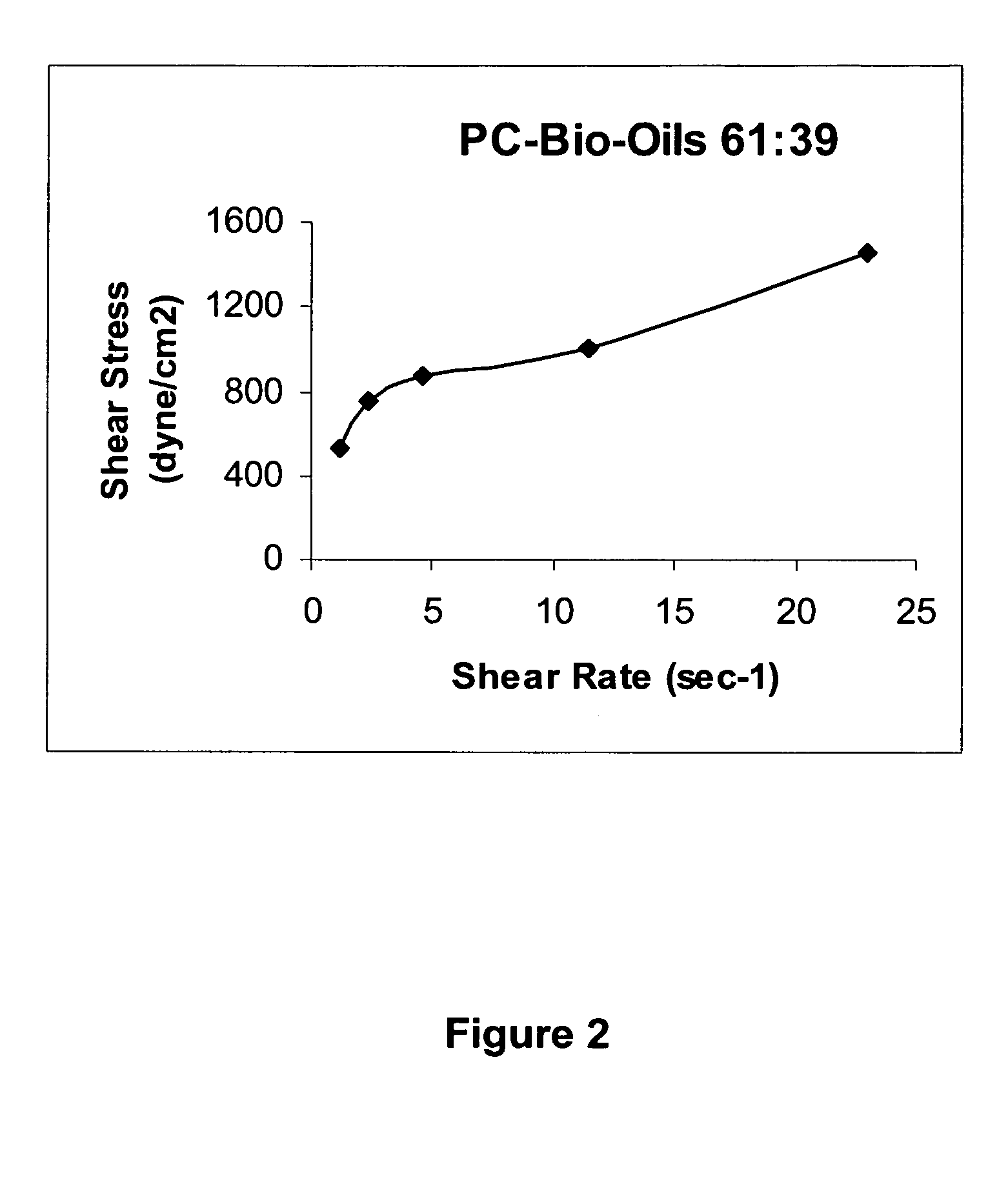Co-gasification process for hydrocarbon solids and biomass
a hydrocarbon solids and biomass technology, applied in the field of synthesis gas, can solve the problems of reducing the overall efficiency of co-firing/co-gasification of biomass and coal, reducing the capacity and availability of facilities, and agglomeration, corrosion and/or erosion,
- Summary
- Abstract
- Description
- Claims
- Application Information
AI Technical Summary
Benefits of technology
Problems solved by technology
Method used
Image
Examples
example
[0045]Experiments using biomass oil and coal were conducted. Pocahontas (bituminous) coal and pyrolysis bio-oil derived from pyrolysis of wood chips (from Biomass Technology Group™, Netherlands) were used to form slurries at a 61:39 wt / wt ratio (coal / bio-oil) which were evaluated for their rheological properties. The data shown in FIGS. 1 and 2 show that the slurries were strongly shear thinning and plastic with a viscosity of 6339 cP at 22.5 s−1 and a plastic yield stress of 0.477 N·m−1 (477 dynes / cm2).
PUM
| Property | Measurement | Unit |
|---|---|---|
| particle size | aaaaa | aaaaa |
| temperature | aaaaa | aaaaa |
| viscosity | aaaaa | aaaaa |
Abstract
Description
Claims
Application Information
 Login to View More
Login to View More - R&D
- Intellectual Property
- Life Sciences
- Materials
- Tech Scout
- Unparalleled Data Quality
- Higher Quality Content
- 60% Fewer Hallucinations
Browse by: Latest US Patents, China's latest patents, Technical Efficacy Thesaurus, Application Domain, Technology Topic, Popular Technical Reports.
© 2025 PatSnap. All rights reserved.Legal|Privacy policy|Modern Slavery Act Transparency Statement|Sitemap|About US| Contact US: help@patsnap.com



